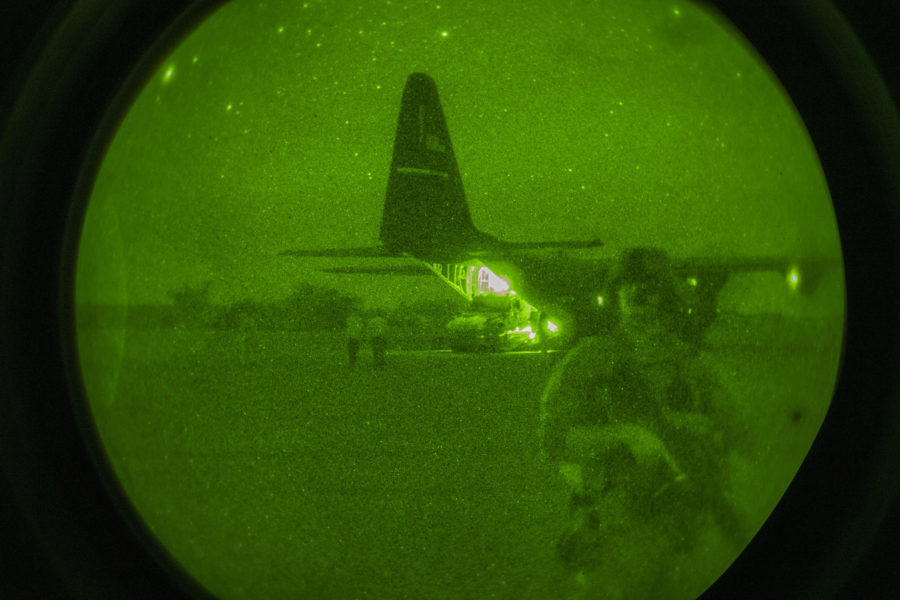The withdrawal of about 700 U.S. forces from Somalia required a massive nocturnal airlift, movement of fighters and tankers from the Middle East, and other overwatch from drones and other special operations aircraft, all planned and executed within weeks.
The mission, called Operation Octave Quartz, came after former President Donald J. Trump in early December ordered U.S. forces to leave Somalia and reposition to other bases in the region. The joint operation was planned and executed “inside of a month,” in a way to protect the forces that were moving from an adversary “that had the potential to hurt Americans,” said Gen. Jeffrey L. Harrigian, commander of U.S. Air Forces in Europe-Air Forces Africa, in an interview.
In that time span, USAF C-130s flew about 200 sorties, moving 4 million pounds of cargo, with the vast majority of those missions conducted at night. A U.S. Navy carrier was dispatched to help, with U.S. Marine Corps F-35Bs providing overwatch. USAF MQ-9s and special operations aircraft also watched over the movements. USAF F-16s and KC-135s from U.S. Central Command flew down to protect U.S. forces moving, Harrigian said.
CENTCOM also deployed E-11 Battlefield Airborne Communication Node aircraft to help the forces communicate as part of the movement.
“As we did this, we recognize that when you pull together a joint task force made up of Americans that are focused on a mission, they’re going to figure out a way to get it done,” Harrigian said. “And they’re going to do it by protecting Americans. They’re going to do it safely and effectively, and they did it in an extremely short period of time.”
Since the U.S. forces are now based outside of Somalia, they now come in to the country in brief visits to work with Somali partners, according to U.S. Africa Command.
